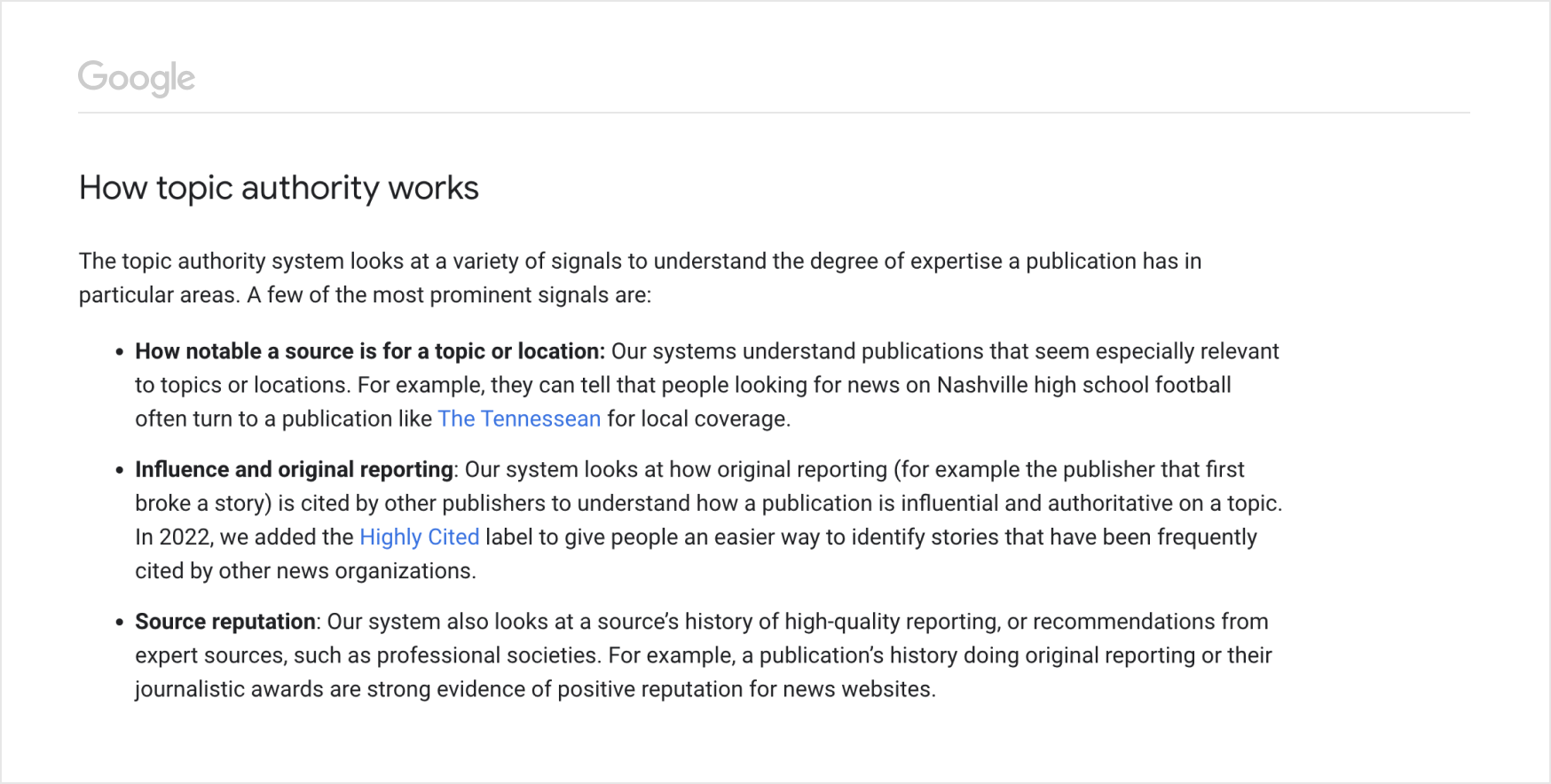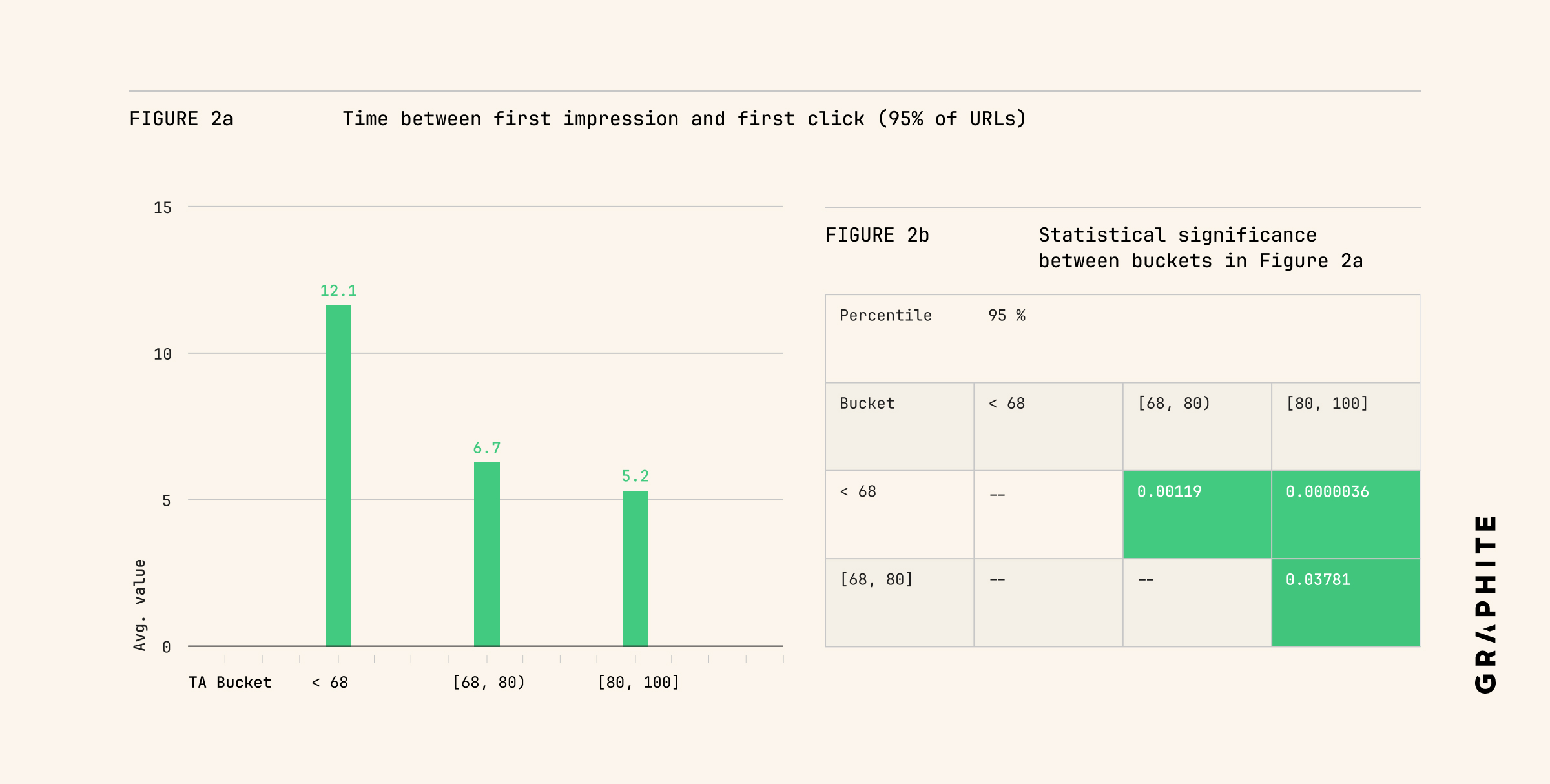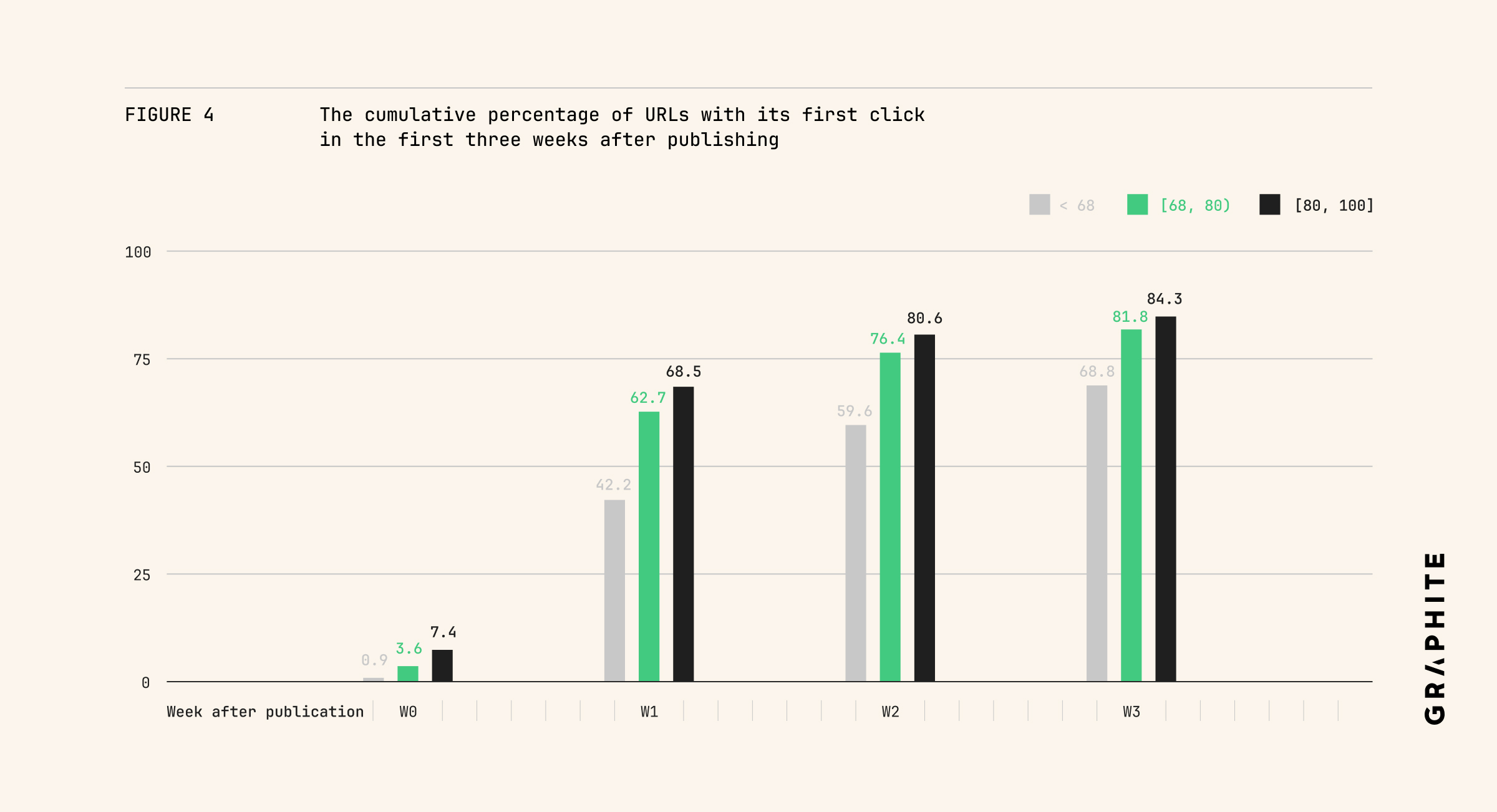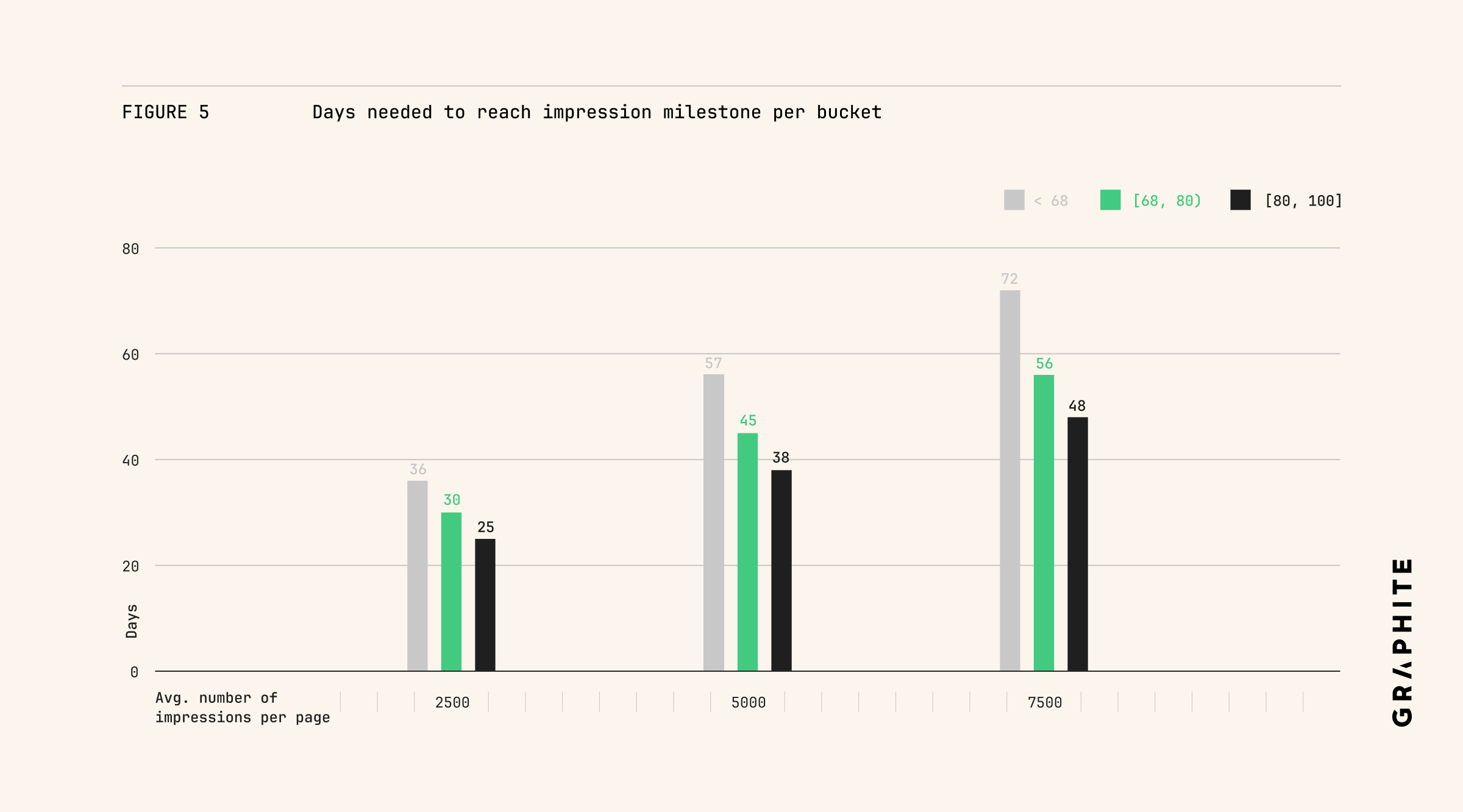Executive Summary
Graphite conducted a study across 12 websites of the relationship between Topical Authority and SEO performance. The study provides evidence that high Topical Authority significantly decreases time to visibility, which refers to how quickly an article earns its first impression and first click.
Introduction to Topical SEO
Before diving into the study’s methodology and results, it’s important to discuss how search engines have evolved from keywords to topics. Over time, Google has developed a deeper understanding of user intent and how to provide relevant results to search queries. Today, content must be designed for keyword clusters that share the same intent — otherwise known as topics. This is supported by the fact that search engines show nearly identical SERPs for the keywords within a topic.
Topical Authority is the new PageRank
Naturally, the emergence of topics has given rise to a new way for search engines to determine authority. In the past, search engines relied heavily on PageRank to determine the value of referring domains. In 2023, Google publicly confirmed that Topical Authority exists and impacts search results (see Figure 1). Because search engines now understand topics, they can assess a domain’s relevance to a topic when ranking results. Content with higher Topical Authority is rewarded with higher rankings and increased traffic.

Why we conducted this study
For several years, Graphite has collected anecdotal evidence that Topical Authority leads to faster traffic growth and more total traffic. For example, we often notice that when an article receives a significant traffic boost, semantically-related articles (those based on related topics) also grow. We theorized that Topical Authority mattered, and we wanted to collect more scientific evidence to validate our hypothesis.
Our Methodology
How does Graphite calculate Topical Authority?
To measure Topical Authority, Graphite needed to develop its own proprietary algorithm. Similar to domain authority or domain rank used across the SEO industry, the values range between 0 and 100, where a high value represents high Topical Authority. This metric measures how similar a topic is to topics a domain already ranks for; it represents the likelihood that a new potential topic will rank given the topical performance of existing related content on the site.
Here are the details of how we approached the study.
Timeframe
We gathered articles published between June 1 and July 31, 2023.
Representative Sample
We selected articles from clients who published frequently during this period and ranged across multiple industries, including:
- Technology, Information, and Internet
- Software Development
- Healthcare Software Development
- E-Learning Providers
- Financial Services
- Manufacturing
- Media Production
Size
Based on the two parameters above, we ended up with 12 domains and 332 URLs.
Segmentation
To collect deeper insights, we distributed URLs equally into three buckets based on their Topical Authority score, placing them in:
- Bucket 1: Topical Authority above 80 (110 URLs)
- Bucket 2: Topical Authority between 68 and 80 (111 URLs)
- Bucket 3: Topical Authority below 68 (111 URLs)
Analysis
We looked at the speed of visibility from a few different angles, including:
- The speed that each bucket gained traffic and the corresponding statistical difference
- The likelihood that URLs within each bucket would receive traffic over time
- The speed that each bucket was able to reach specific impression milestones
Results
High Topical Authority increases the speed of organic search visibility
To remove the noise of manual error and indexation problems, we analyzed the speed of visibility by looking at the time between the first impression and first click. To reduce the impact of outliers, the charts below exclude the bottom 5% of URLS (~5 URLs per bucket) that had the slowest time to visibility.

Topical Authority increases the percentage of pages that get visibility in the first three weeks
Next, we computed the cumulative percentage of pages that got their first click in the first three weeks after publishing.
In the following chart, W0 represents the day the article was published.

Topical Authority reaches impression milestones faster
Lastly, we studied how quickly each bucket reached specific impression milestones. The previous analyses showed that pages with high Topical Authority receive their first impression and click faster, but we also wanted to understand whether or not this growing visibility translated into performance. To visualize this, we set impression milestones (2500, 5000, and 7500) and calculated how many days it took for each bucket to reach these milestones using the average number of impressions per page.

Conclusion
One of the most commonly cited downsides of SEO is that it takes a long time to see results. The findings from this study suggest that prioritizing topics by Topical Authority can be a powerful way to accelerate time to impact.
At Graphite, we prioritize content using Topical Authority, along with Topic Search Volume (the aggregate search volume of all the keywords in a cluster) and Business Value (how much a topic aligns with hitting company goals like brand awareness, conversion, and revenue). Together, these three factors provide our team with a strategic framework to identify the 5% of content that will drive the biggest impact.
While this analysis focused on search visibility, we also believe that Topical Authority impacts total traffic. We plan to study this relationship in a future white paper. Graphite’s Topical Authority metric is currently only available via the Graphite Platform. Learn more by visiting graphite.io/platform or email us at workwithus@graphitehq.com.



